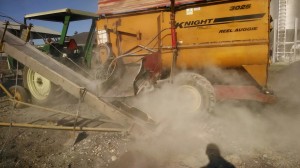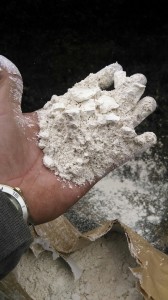This is, obviously, my first post and it is a little later than I would have liked it to be. So let’s not waste any time and get down to what I’ve been doing with my life. This summer I have been working on a large, about 1600 acres, vegetable and grain farm in Seneca Castle, NY, which is just outside of Geneva. My job description covers anything from shoveling hundreds of pounds of chicken litter all the way up to tillage and planting. I began working there in late May right in the middle of the spring rush and it was a rude awakening. I was used to the college schedule: going to bed sometime around midnight and waking up at 8:00 or 9:00 for a day of classes which, at latest, went to 4:30pm. It was a difficult transition to going to bed at 10:00, getting up at 5:30, and working until 7:00 or 8:00pm, just to do the same thing the next day. Even though I had never considered another career other than large-scale vegetable production, I spent a lot of the first week reevaluating my life decisions and considering other careers.
Once I got used to the long hours, short sleep, and practically nonexistent social life I was very happy. I was coming into this internship with minimal production experience despite working on my neighbor’s vegetable farm back home for five years and on field crop research for one. Either way there is nothing that can prepare you for farmwork like farmwork. Due to my lack of experience, plus I was the new guy, I started out with a lot of busywork projects like using a loader to move a large pile of peat about 25 feet to the right and smoothing out rough spots on the lawn. As the days past I was put on more applied projects like fertilizing, tilling, planting, an so on.
The owner of the farm, Rick, puts a lot of emphasis on pre-plant fertilizers, many of which are custom mixes mixed right there on the farm with materials including, but not limited to, chicken litter, potash, and gypsum. These were some of the materials which comprised the majority of the mixes, but in addition there were micro nutrients like sulfur, boron, zinc, copper, and diatomaceous earth. The chicken litter, while adding some nutrients, serves largely as a vector for the micro nutrients so the smaller quantities can be spread evenly over the field. Diatomaceous earth (DE) is, in my opinion, one of the more interesting micro nutrients as it serves as a kind of natural insecticide. DE is a floury substance which coats everything, the microscopic components are shaped like fishhooks and are irritants to insects, which helps keep them out of the crop, at least for a while. Each mix is tailored to the specific needs of the field and the crop it is destined for. Some batches may have 300 pounds of sulfur while another may have none. These batches are mixed in an old feed mixer and is measured by weight. One all the ingredients have been added, the fertilizer is mixed and is transferred via conveyor belt to a fertilizer spreader and then to the field in a prescribed quantity.



Speak Your Mind